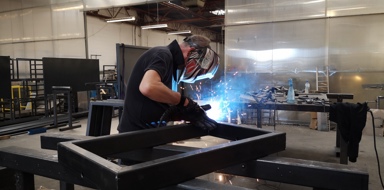Firstly, I want to clarify what I mean by ‘robotics’. For this piece, I mean physical automation. This is often confused with robotic process automation (RPA) or artificial intelligence (AI) applications.
There are so many advantages to robotics. Let’s go through some of the key benefits:
Improved productivity
Robots have a shorter cycle time than humans. Plus, they can do something that people would struggle with: working 24/7. The result? A substantial rise in productivity. They can be used for line resilience as well. If there’s a spike in demand, it’s a simple case of increasing their shifts.
Enhanced product quality
Robots are highly precise. This means there is a much lower chance of errors and mistakes, so you can guarantee the quality and consistency of output.
Reduced operational costs
Many use robots to carry out repetitive, low-value work. This saves some of the costs associated with the particular operation, allowing these savings to be redistributed elsewhere. As a result, you can boost the quality of other, higher-value areas.
Upskilled workforce
The manufacturing sector needs to close its growing skills gap. When industrial robots are used to perform the lower-skilled operations, team members can be deployed to undertake more challenging work or attend training sessions.
Better health and safety
Poor work environments and highly repetitive tasks are sometimes harmful to humans, and it is here where robots are best placed. As they don’t suffer fatigue, they’re less likely to make mistakes or experience accidents.
This is by no means an exhaustive list. Other benefits to robotics include:
- Greater staff fulfilment
- Increased capability and flexibility
- Better data capture and process oversight
- Less handling time
- Improved compliance
- Reduced downtime
- Higher space utilisation
- Integration with ERP and MRP systems
- Clearly defined payback times






